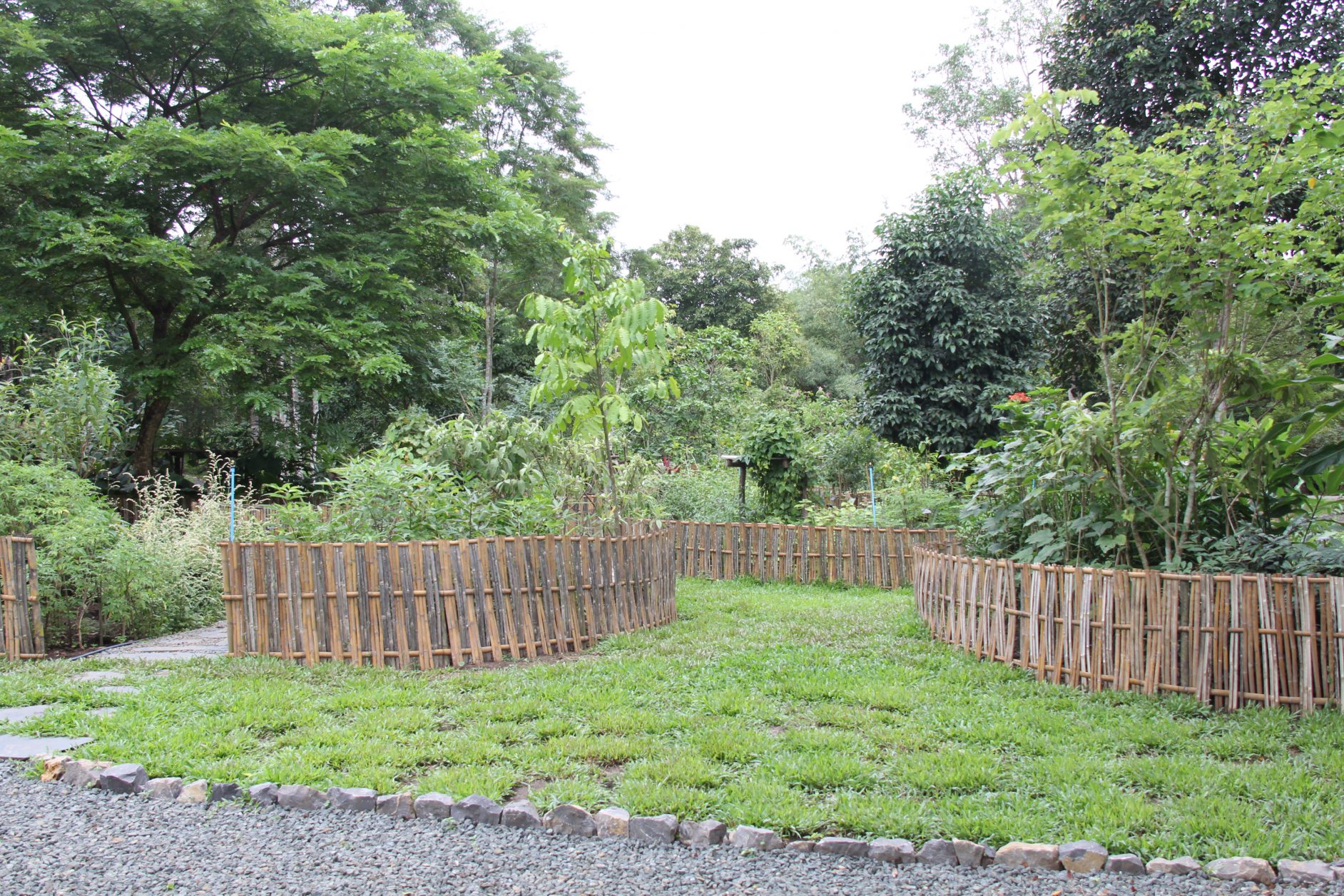People talk about being “thrown in the deep end”, and that was certainly how I felt in my first few weeks in my new job as a botanist at Pha Tad Ke Botanical Garden. Newly arrived from London and a short stint working at the Royal Botanic Garden, Kew, the city of Luang Prabang and the tropical plants of Laos were a very different world.
When I arrived at Pha Tad Ke construction of the new ethnobotany garden was about to begin. As part of creating this new garden space we wanted to have a lot more plants than we had in our smaller, original plot. The new garden needed to cover a broader range of traditional uses and provide more and better information to visitors. The staff here had already sourced and decided on most of the plants with help from Dr Biba Vilayleck, our consulting ethno-botanist, who has been involved with PTK for many years. However, there was one group of plants to go into the ethno-botany garden that we were missing some vital information on – the Hmong plants.
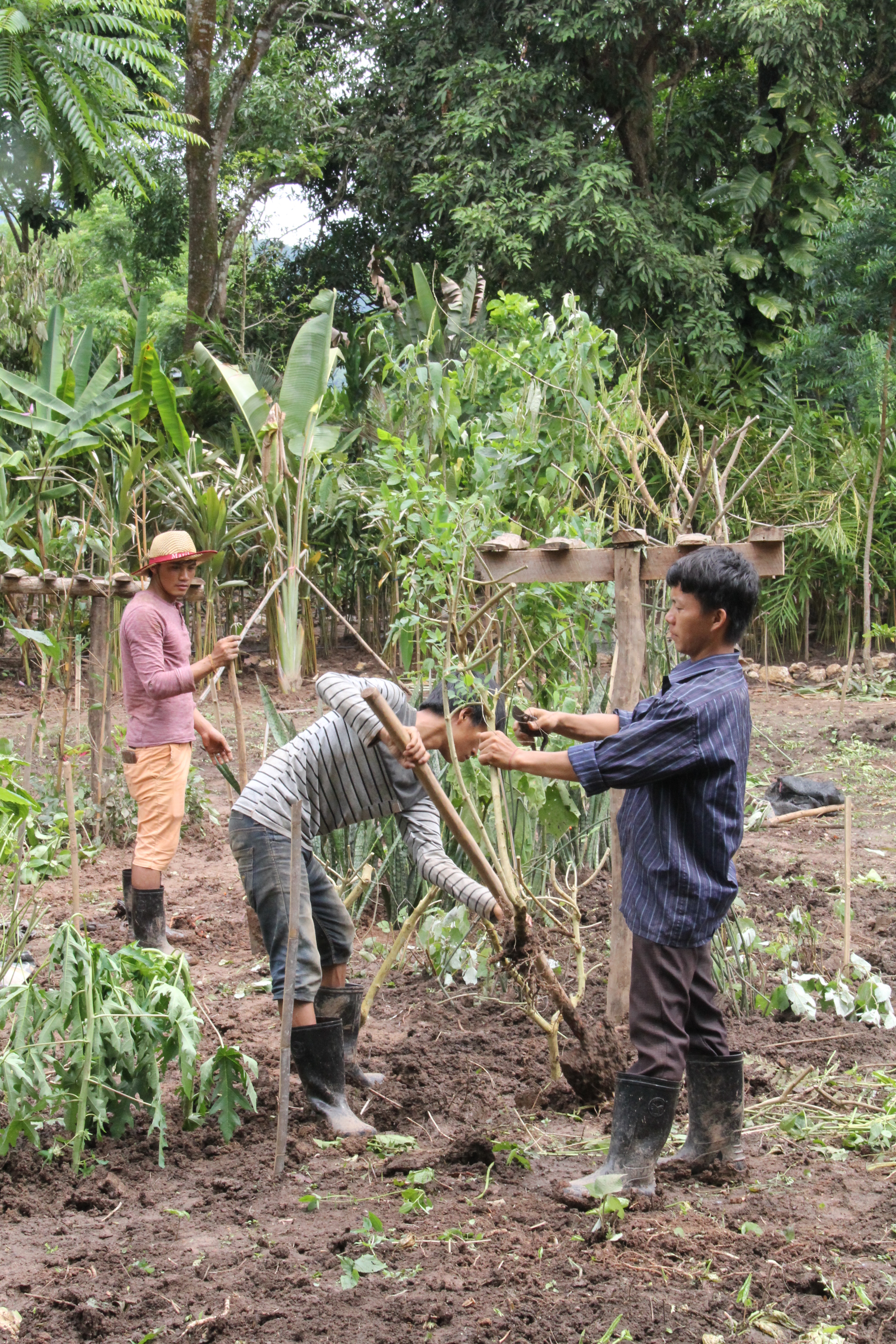
Creating the Ethno-botany Garden
The Hmong are an ethnic group found in Laos, Thailand, Cambodia and Vietnam. They have a different language, culture and traditions, from the Lao ethnic group which constitutes the majority of the population in Lao PDR.
One of our Senior Gardeners, Bee Xong, whose responsibilities include managing the ethno-botany garden, is Hmong, and he sourced a variety of plants, that the Hmong use, for us to display. His knowledge of the uses of these plants is excellent, but he did not know the Lao name for most of them, never mind the scientific name! My first challenge as PTK Botanist – get scientific names for as many of these plants as possible, as soon as possible.
So, how to go about this? Some ethno-botanical research has been done in Lao PDR, but it is far from comprehensive, so there were no easy go-to resources to use. This meant doing it the hard way – applying my botanical skills and plant knowledge to slowly narrow down the possibilities until I could go no further in the hunt for a species name. This process is slow and can be very frustrating. There are a huge number of different plants in the world, and one cannot possibly know all of them. We have a small botanical library here at Pha Tad Ke, and I was able to use this for help with some plants. There is no information or incomplete information published and available for whole groups of plants, so the library could not completely solve my problem. Still, learning to identify plants with no/minimal literature resources available was responsible for quite a lot of the blood, sweat and tears I shed to obtain my degrees, so I needed to get on with it.
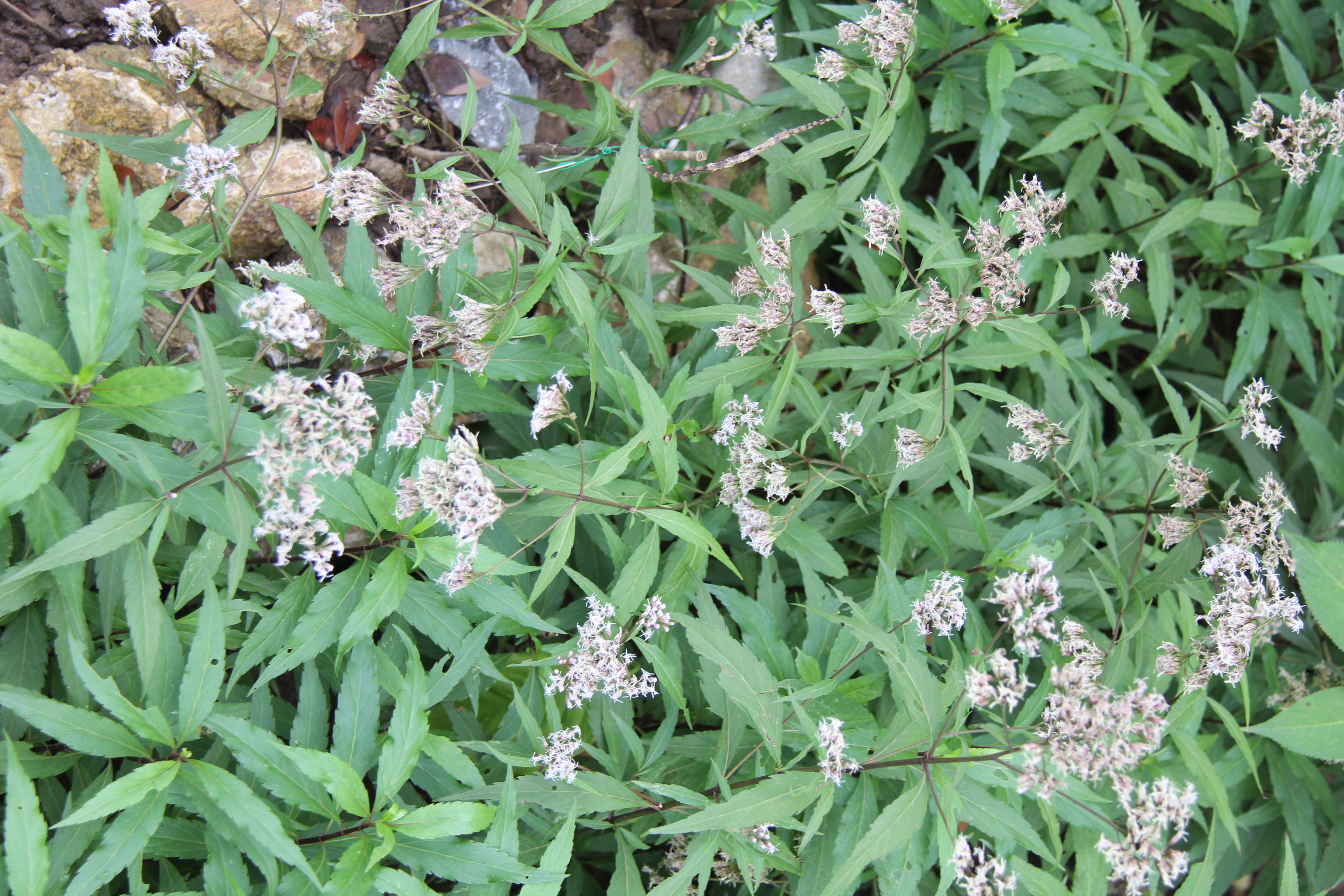
A still unidentified species in the Hmong plot
The first step was to spend some time with Bee Xong to pick his brains for information on the plants. Bee Xong’s English is better than my Lao, but we did not have enough common language between us to communicate effectively. One of the other members of staff who is more fluent in English was required to act as a translator. The three of us made our way around through the Hmong plants together, while I asked questions to find out what each plant was used for, what the flowers and fruit looked like (key information for botanical identification), whether the plants were at their full size or if they still had growing to do, what habitat they would usually be found in, and so on and so on. After a day of doing this I was now ready to consult what literature we had available, my hard-earned notes in hand.
What followed was a few weeks of me reading literature, following plant identification keys, constantly going to the garden to look at the plants and asking for help with translating my questions and queries to Bee Xong. With some plants I succeeded in arriving at a scientific species name that I felt fairly comfortable with. For others I only managed to work out the genus. I could not manage more than a family identification for some plants, and a few not even that. Such is the nature of botanical identification work unfortunately!
I sent the new names that I had off to our consulting ethno-botanist to get her input on the uses of the plants as well. When she sent back her information we could finally put together the signs for the Hmong section of the ethno-garden – job done!
- So why have I chosen to tell this little story for the very first blog of our newly opened garden? Firstly, this explains just a very small fraction of the work that has gone into putting together the botanic garden, and perhaps it will help you to appreciate the effort put in by all the staff over the last eight years to get this project up and running.
Secondly, I hope it has made you think about the complexities of plants, and about the sheer number of them on the planet. The diversity of plants is part of what has made them successful and resulted in them ‘conquering the planet’. It is also part of what makes them exciting to botanists, and what drives us to take up studying them as a career. However, this same diversity means we will never know every plant and results in frustration when we can’t work out what we’re looking at, no matter how hard we try!
Here in Laos this is further compounded by the lack of information available about native species. So little of the flora of this country has been catalogued, never mind studied. This means that when an experienced botanist cannot identify a plant, there is a fair chance that the reason for this is not just that they do not know about that species but that no-one does, and it is at yet undescribed to science. While discovering new species is thrilling, and the chance to do so certainly excites many people, it is also a lot of work.
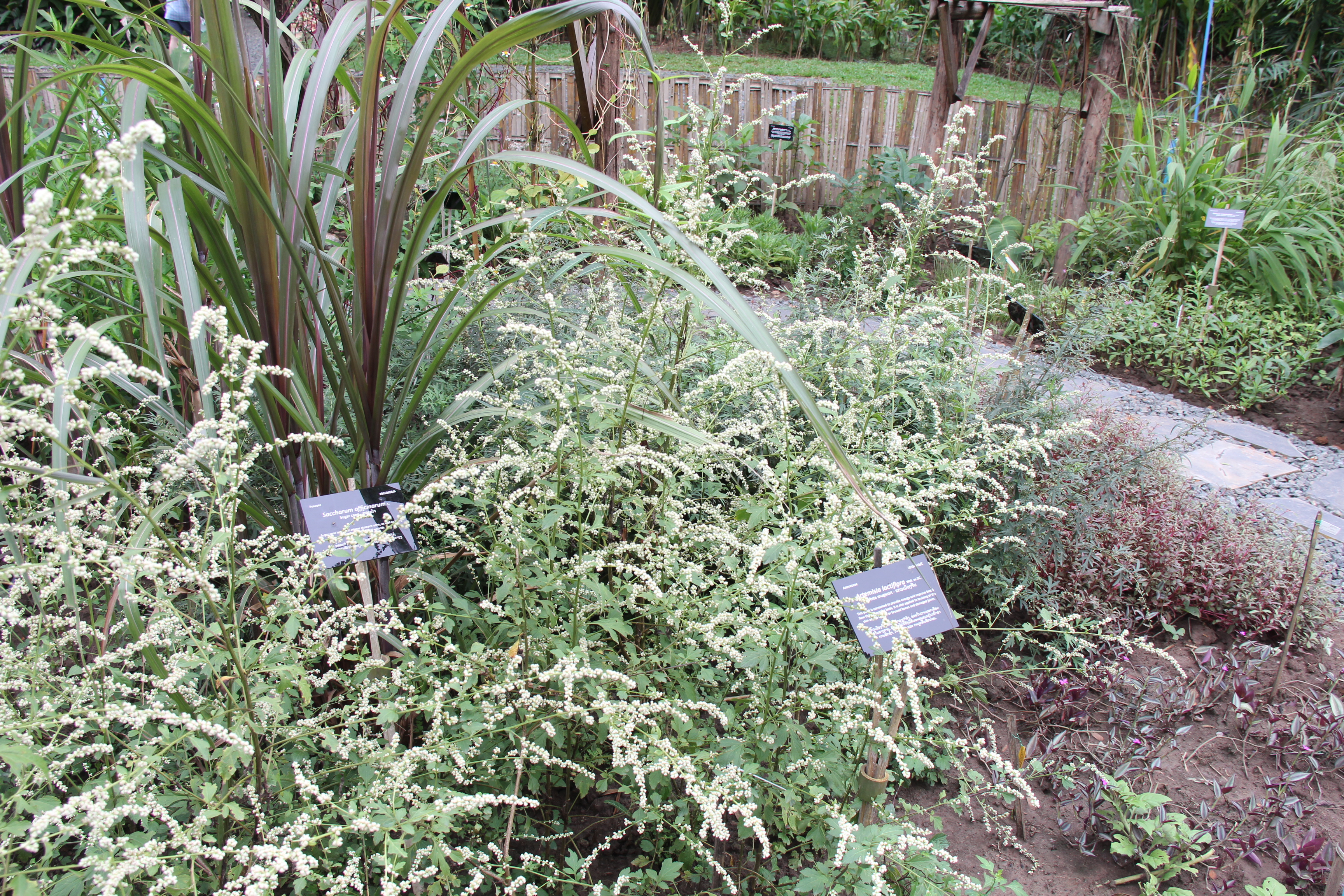
Some successfully identified plants, now labelled
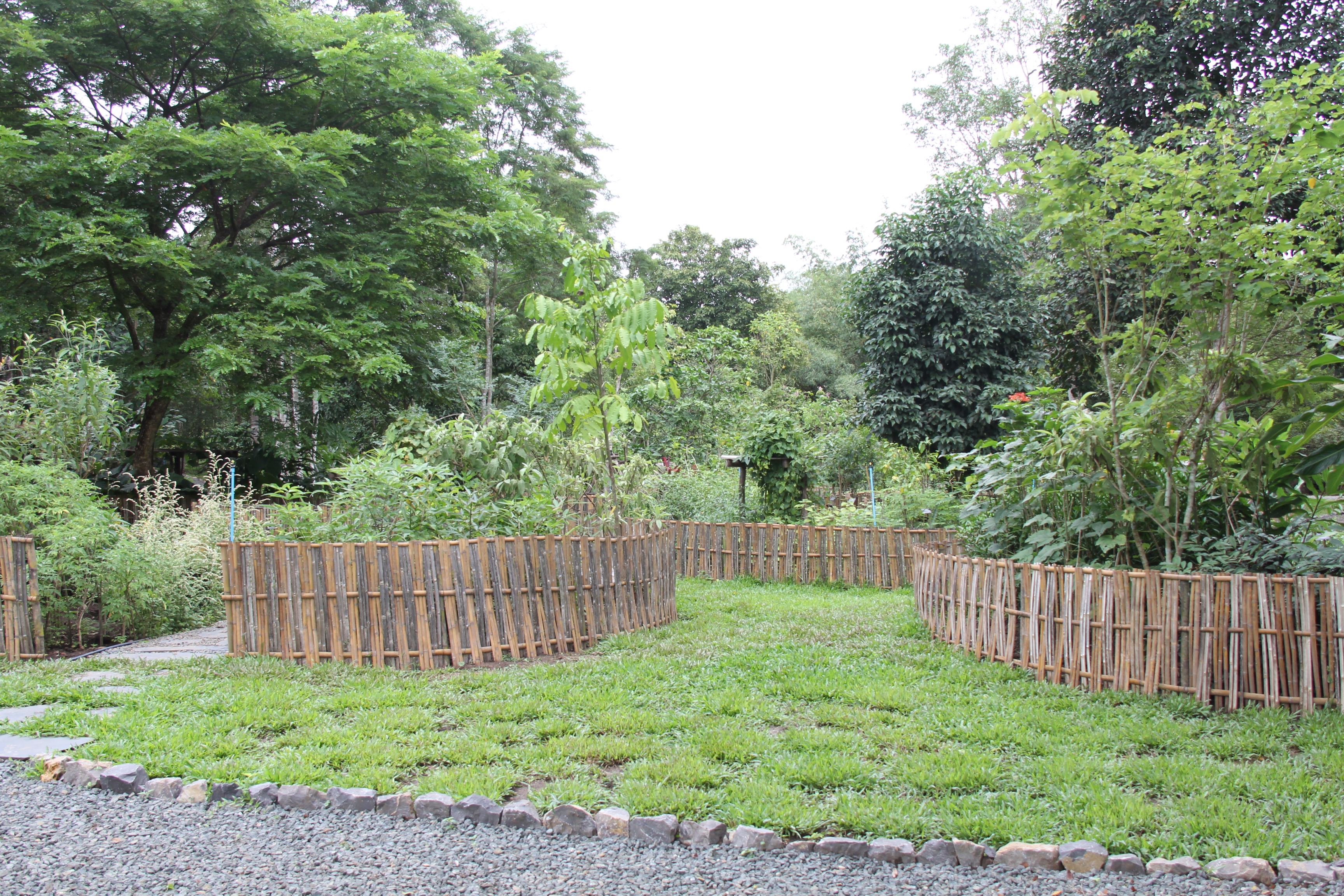
In order to start to piece together a better picture of the Laotian flora we need well-trained, experienced botanists, time and money. A lack of all three of these is a constant complaint made by all avenues of science these days, and I feel like a stuck record repeating the party line, but this is the unfortunate truth. In a world where we increasingly want more for less, and for everything to happen now, now, now, there is still no other way of dealing with the huge number of unstudied plants except hard graft.
Trained experts from other countries (like myself!) sometimes come to Lao PDR to do botanical work. The challenge after that is disseminating their knowledge to the locals and providing training if required. The inevitable language barrier does not make this any easier. Here at Pha Tad Ke this capacity building is a cornerstone of what we do.
We are lucky enough to already collaborate with some great organisations, including Queen Sirikit Botanic Garden (Chiang Mai, Thailand), Singapore Botanic Garden (Singapore) and the Royal Botanic Garden, Edinburgh (Edinburgh, Scotland). We also work with some international experts on certain groups of plants, including orchids (Professor Bouakhaykhone Svengsuksa, NUoL) and gingers (Dr Jana Leong-Škornikčová, SBG, and Dr Mark Newman, RBGE). These collaborators help us to do work we would not be able to do alone and provide us with the opportunity to continue to learn about the wonderful plants all around us here in Laos.
We hope you enjoyed this blog, the first of many about the work at Pha Tad Ke and in the botanical and horticultural world. If you did, please spread the word about our garden and what we are trying to achieve. Use social media to give us a ‘like’ and a ‘share’, and leave us comments there too.
By Bryony Smart, PTK Botanist



